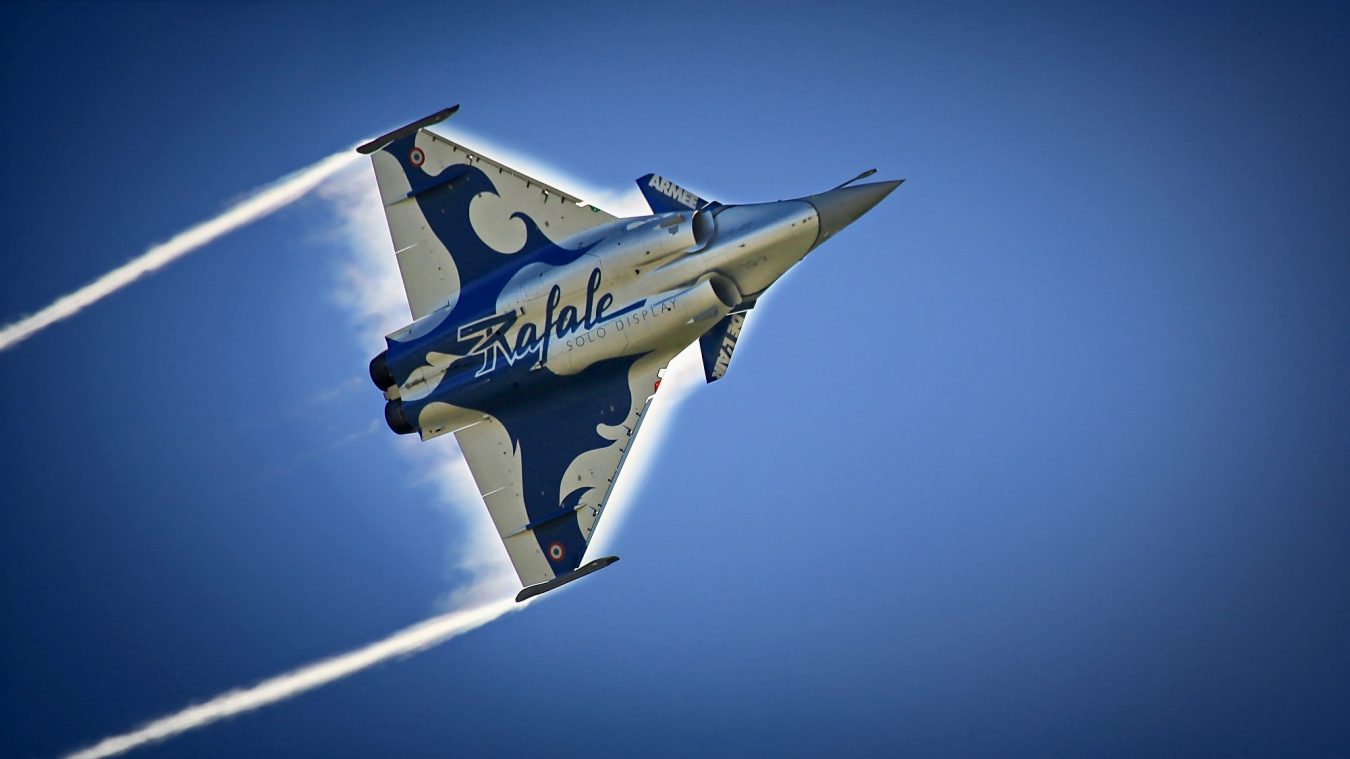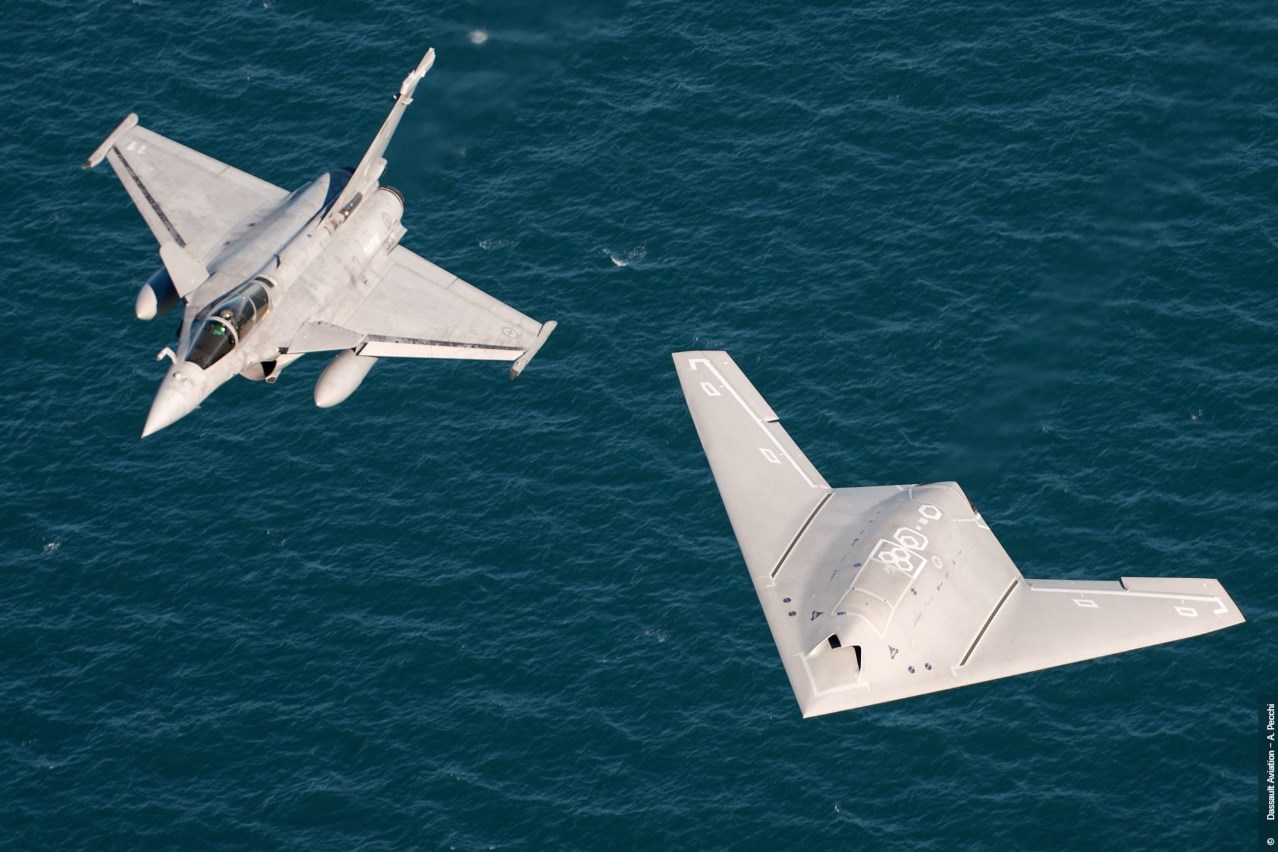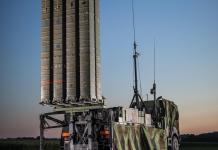The French Air and Space Force (FASF) has just ordered 42 Rafale jets for around $5.5 billion. The purchase comes amidst French lawmakers’ concerns about the serious delays in the Franco-German-Spanish “Future Combat Air System” (FCAS) project, which was to be Rafale’s successor.
The FCAS is now predicted to enter service no earlier than 2045 or 2050. The French defense procurement agency has notified Dassault Aviation and its major equipment suppliers, Thales, Safran, and MBDA, of the fifth round of the Rafale production contract.
The FCAS is supposed to be a fifth-generation-plus aircraft. It is funded by some of the major financial and technologically advanced European countries. They have found hurdles in proceeding forward.
Also, the FCAS could cost two to three times as much as a Rafale. France has chosen to bank on its indigenous 4.5-generation Rafale, albeit with upgrades.
India has a fifth-generation aircraft program, the Advanced Medium Combat Aircraft (AMCA), which has already been divided into two phases, partially stealth and stealth. What lessons and options are there for India?
FCAS Program
The FCAS is a tri-nation (France, Germany, and Spain) fifth-generation-plus aircraft project that is a continuation of an earlier project with a similar name between the UK and France.
Dassault Aviation, Airbus (Germany), and Indra Sistemas (Spain) are the co-developers. The FCAS will consist of a Next-Generation Weapon System (NGWS) as well as other air assets in the future operational battlespace. The aircraft will also act as the remote carrier-cum-controller vehicle for swarming drones.
Dassault will be the prime contractor for the Next Generation Fighter (NGF), Airbus will lead the development of accompanying remote carrier vehicles and cloud communications, and Safran Aircraft Engines will evolve the aero-engine and its integration along with MTU Aero Engines. Thales and MBDA will undertake significant developmental work.
FCAS will have aircraft carrier operations capability. It will follow the System of Systems approach. Initial work began in 2017.
In June 2023, Belgium became an observer and may join the program by mid-2025. It will replace the French Rafale, Germany’s Typhoons, and Spain’s EF-18 Hornets around 2040. The demonstrator test flight is expected around 2027. The delay in the program has now been openly acknowledged, pushing alternative choices.
F3 & F4 Rafale
The Rafale is considered a 4.5-generation fighter similar in class to the Eurofighter Typhoon. It has forward-hemisphere stealth and super-cruise capability.
IAF Rafale aircraft are highly customized with some India-specific modifications. Essentially, they are of F3-plus standard. The F3R standard was validated in 2018 and is currently in place on French Rafales.
Development of the F4 standard began in 2019. The standard improved on-board processing, external connectivity, MBDA’s MICA medium-range air-to-air missile, and upgrade of the Thales Spectra self-defence system.
The radar and sensor upgrades facilitate the detection of airborne stealth targets at long range. There are also improved capabilities in the helmet-mounted display. With improved communications equipment, it is also more effective in network-centric warfare.
Flight tests began in 2021, and the first F4-standard aircraft was delivered in 2023. The FASF aircraft are planned to be will be upgraded to this standard. UAE is the first foreign customer of F4.
The qualification of the F4.1 standard was announced in March 2023. The F4.2 standard is expected by 2025. They will spend $1.51 billion to upgrade the Rafale to F4 standard between 2024 and 2026. The Rafale is planned to be the FASF’s primary combat aircraft until at least 2040.
Super Rafale F5 – Cutting-Edge Capabilities
Until FCAS becomes operational, France will need a top-end fighter for both aerial and nuclear deterrence. The current Rafale top preparation standard is the F4.
Unlike Germany, one of the partners in the FCAS program, the French have not acquired the American F-35. The F5 version will be developed under the French government’s military planning program 2024-2030.
It is the Plan ‘B’ given FCAS delays. Dassault and its partners are already working on the F5 standard, which will be ready by around 2030. The upgrade will be incremental. F5 will share some features with the next-generation European aircraft. The F5 standard will have new sensors, armaments, and a faster and more secure ability to communicate and collaborate.

The aircraft will have a much better electronic warfare suite, with advanced capability for Suppression or Destruction of Enemy Defences (SEAD/DEAD), using the latest jamming systems and anti-radiation weapons.
It will be a further evolution of the existing SPECTRA EW and jamming system that combines radar jamming, ECCM, infrared, and radar decoys and will also create a “defensive bubble” around the aircraft.
There is a proposal to have on-board and air-released systems for saturation of the electromagnetic spectrum to deny combat access to adversaries. These will be applied simultaneously in coordination with surface forces under multi-domain conditions.
F5 will also introduce fiber-optic cabling. All this will greatly improve penetration in contested environments.
The Rafale F5 will also act as a sensor truck with data fusion and processing abilities that allow it to take on a tactical flying command post role, a job that is evolving in the USA’s Next Generation Air Dominance (NGAD).
Futuristic surface attack and anti-ship missiles are being developed, and so are long-range air-to-air weapons. The F5 will also be modified to carry the Anglo-French Future Cruise Missile (FCM) and Future Anti-Ship Missile (FASM). Thales RBE2 XG radar is planned for F5.
The “Super Rafale” will also be modified to carry hypersonic nuclear-guided missiles known as “ASN4G,” which will replace the nuclear-guided ASMPA missile as France’s deterrence capability. Dassault calls it an Air Combat System within a system rather than just a fighter jet like the current Rafale F4 variant is.
F5 deliveries were initially planned to start in 2029, but discussions are underway to deliver them starting in 2027. The F5 standard will give combat proficiency while waiting for the Next Generation Weapon System within the FCAS program.
Specialized munitions and drones will be developed for various kinetic and non-kinetic roles. These will give it greater long-range strike and combat capability. By 2024, it is planned to integrate a loyal unmanned wingman on the lines being evolved in the European nEUROn combat drone program. The loyal wingman concept is being developed by most major countries, including India.

France will reportedly invest the equivalent of $6.75 billion into the Rafale aircraft program between 2023 and 2026 and has earmarked an additional $5.87 billion after 2026. France continues to see a market for Rafale F5 for those unable to acquire the F-35 for geo-political reasons.
The Rafale is distinct from other European fighters because it is almost entirely built by one country, with Dassault (airframe), Thales (avionics and EW), and Safran (aero-engine) covering all the major systems.
Rafale also has a carrier-based maritime variant. French officials had reportedly also considered equipping the Rafale to launch small satellites.
Global Rafale Sales
The Rafale entered service with the French Navy in 2004 and the FASF in 2006 and has seen action in Afghanistan, Libya, Mali, Iraq, and Syria.
The numbers built to date are around 260. The new order will take the total number of Rafale in the French armed forces to 234. Rafale export orders currently stand at 297, including India (36), Egypt (55), Qatar (36), Greece (24), United Arab Emirates (80), Indonesia (42), and Croatia (24) as current foreign customers.
The FASF new order will keep Dassault Aviation Rafale’s production line active for the next 10 years.
Could F5 Be a Choice for India?
Indian military’s fighter aircraft fleets currently face two major issues. The first is the shortage of fighter aircraft numbers with IAF, which is down to 31 vis-à-vis authorized 42 squadrons, and the Indian Navy (IN) requires additional carrier-based aircraft.
While IAF has already committed to over 200 of each of LCA Mk1 and Mk2 variants, their development and induction will take a long time to bridge the capability and numbers gap.
Rafale is one of the contenders of IAF’s 114 aircraft proposal. Rafale-M has reportedly been short-listed by the Indian Navy. IAF already has the infrastructure for two more Rafale squadrons.
The second issue is that of the fifth-generation fighter. China already has 150 J-20 fifth-generation aircraft, and PLA Air Force plans to have 400 of these by 2027.
Pakistan has already approached China to acquire J-31 fifth-generation aircraft and is talking of 2029 timelines. India’s homemade fifth-generation fighter AMCA is likely to have its first flight around 2029 and may be inducted as early as 2035. The level of stealth is still to evolve. In any case, the development has been split into two phases: Mk1 and Mk2.
The US is not offering their F-35 fifth-generation fighter. Even if they do, they could have serious strings attached to that decision. India cannot afford to put any more eggs in the Russian basket. India has a choice of joining the FCAS program, but that has now been considerably delayed.
A scenario that then evolves is that India could consider the Make-in-India Rafale to meet both IAF and IN requirements. The new purchase could be of F4 standard. There could be a caveat for commitment to upgrade to F5 standard.
The rough idea of developmental costs is already in the open. This will allow India’s strategic community and policymakers to do a cost-to-capability analysis, hastening the plugging of the capability gap.
It will not compete with India’s indigenous AMCA program, which can be accelerated in parallel. France has been a tried and tested friend. The French president will be the Guest of Honour on Republic Day 2024.
India has been flying French combat aircraft since the 1950s. Fighter aircraft options and costs are complex matrices. To begin with, it is worthwhile to start an internal dialogue within India’s aviation community.
- Air Marshal Anil Chopra (Retired) is an Indian Air Force veteran fighter test pilot and is currently the Director-General of the Center for Air Power Studies in New Delhi. He has been decorated with gallantry and distinguished service medals while serving in the IAF for 40 years. He tweets @Chopsyturvey
- Follow EurAsian Times on Google News




